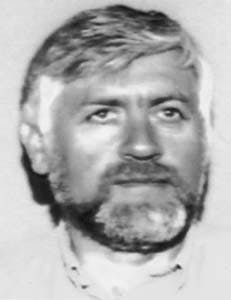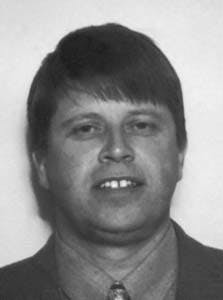Troll, Haltenpipe showcase offshore pipelay advances
Frank Blaker, Erling Gjertveit, Jostein Breivik
Den norske stats oljeselskap a.s. (Statoil)
Stavanger
Pipelines installed on the Norwegian continental shelf represent current offshore pipeline installation technology for pipe size (up to 40 in.), water depth (to 540 m), distance between pigging stations (up to 800 km), and complex seabed intervention and landfall construction.
Furthermore, the number of deepwater pipelines worldwide has triggered significant advances in the development of pipeline repair.
The most important developments include the following:
- Use of advanced subsea mapping and positioning
- Hydraulic flow modeling to simulate unique flow conditions inside a deep and narrow fjord
- Control of multiple free span behavior by use of advanced design methodology
- Use of strain-based criteria to reduce large-scale seabed correction works
- High precision pipelay in deep waters (maximum 540 m) involving guided laying to ensure the correct position of the pipeline across preinstalled gravel berms and at laterals.
These developments are typified by achievements in the Troll oil pipeline and the Haltenpipe projects.
The Troll oil pipeline and Haltenpipe projects faced similar technical challenges: irregular seabed, conditions requiring highly accurate mapping, careful routing, free-span design, seabed preparation works, and special low-tension lay techniques.
The two projects, therefore, have in many ways benefited from each other and been run practically as one large integrated project.
The main contractors in both projects have been Snamprogetti, Bredero Price Norway A/S (coating), EMC (installation), Jebsen ACZ (gravel dumping), Universale Bau (landfall borehole).
Troll oil pipeline
In the western province of the giant Troll field, Norwegian North Sea, operator Norsk Hydro has begun operations at Troll B, a large oil-production platform. This floating unit is connected with an 86 km long, 16-in. carbon steel pipeline, the Troll oil pipeline, to Mongstad oil terminal on the west coast of Norway.
The associated gas is being transported to the Troll A platform and further to the Kollsnes shore terminal for final processing (Fig. 1 [14179 bytes]).
Plans for the development and operation of the Troll oil pipeline received final approval by the Norwegian government in December 1993. The pipeline was installed in summer 1995 and put into operation in October 1995 (OGJ, Oct. 16, 1995, p. 121). Statoil operates the pipeline.
Starting point for the Troll oil pipeline is the tie-in point to the riser base connecting the pipeline to a flexible riser on the Troll B platform. The 16-in. OD pipeline moves directly to Mongstad.
Design capacity is 25,000 standard cu m/day (scmd; 157,500 b/d) which has been increased to 30,000 scmd by use of flow improver. The design pressure for the pipeline is 185 bara (2,680 psia) because of the necessary deepwater wall thickness; the operating pressure is 150 bara, however.
The pipeline route has three sections of particular interest: Norwegian Trench, Fensfjorden, and landfall.
Water depth in the Norwegian Trench is mainly 320-335 m (1,050-1,100 ft) with a short section up to 450 m. At the entrance to the Fensfjorden, water reaches the maximum depth of 540 m. Through the fjord, water is mainly between 500-310 m deep with a maximum depth of 530 m (Fig. 2 [19508 bytes]).
Surveying
An extensive survey program was carried out to document seabed conditions along the route, including geotechnical information.
A 4-5 km section of the pipeline route at the entrance of the fjord crosses very uneven seabed with outcropping bedrock, steep lateral and longitudinal slopes, and seabed layers varying from soft clay to boulders.
During 1993 and 1994, seven different surveys were carried out.
Significant improvements have been achieved in underwater positioning, ROV-mounted seabed mapping equipment, and data processing over the last few years. These improvements allowed accurate documentation of the complex seabed topography.
Providing reliable and detailed seabed data was imperative in order to document technical feasibility and develop a cost-effective design for the Troll oil pipeline.
Also performed were soil investigations that consisted of more than 150 piezocone penetration tests and 200 soil samples along the entire route. The surveys also covered critical crushed-rock sleeper locations and possible unstable sediment pockets at the steep sides of Fensfjorden.
Extensive laboratory testing followed to establish proper design criteria and to assess the pipeline safety in relation to the potential hazards from any slope instabilities.
Current measurements and model studies were carried out to characterize the complex current pattern inside the threshold of Fensfjorden. Previous measurements indicated significant periodical changes in current velocity, the dominant direction being eastwards.
Altogether, 16 rigs equipped with 28 current meters were in operation for periods from 1 to 18 months. The main concentration of instruments was in the outer Fensfjorden area where the highest current speeds were expected and the pipeline was predicted to have several free spans.
The complex current regime in the entrance to the Fensfjorden was modeled both in the laboratory and by numerical techniques to determine the design values of the bottom-current velocities along the route.
Some strong periodical current inflow events were observed through the current-measurement program; these were successfully reproduced by the models and thereby increased the reliability of the predicted design values.
The mass of water that flows over the sill is Atlantic water, coming from the bottom of the Norwegian Trench. The water is lifted by dynamic effect when larger whirls in the surface layer pass from south to north in the Norwegian coastal current.
Design; route preparation
In the outer Fensfjorden, the pipeline has several free spans as a result of uneven seabed. A major challenge for the Troll oil pipeline was to predict accurately and design for the free spans against vortex-induced vibrations.
The pipeline profile is characterized by "multispanning," a series of free spans with short intermediate supports (Fig. 3 [15699 bytes]).
In this situation, the boundary conditions appropriate to each individual span may vary considerably, and no simple relationship exists between span length and the natural frequency as is generally the case for isolated free spans.
The seabed characteristics and the uncertainty of the physical parameters affecting the design, in particular the current velocity, led to the decision to use the minimum allowable "cut off" natural frequency as the governing criterion, including a safety factor.
Complying with the design criteria required seabed intervention before pipelaying to prepare the route and to freeze the as-laid configuration after laying. The stability of the artificial rock sleepers has been confirmed.
The prelay dumping of crushed rock was performed in October 1994, and 30 sleepers were installed in the deepwater section at the entrances of the fjord in water depths up to 536 m. The largest sleeper, with a height of 3.5 m, required counterfills to ensure stability.
Improved technique and positioning allowed sleepers to be installed with an accuracy of ±0.2 m vertically and ±2 m horizontally. This accuracy permitted optimization of the total volume of preroute intervention to only 23,000 cu m, compared to the initial estimate in excess of 120,000 cu m.
With pipelay completed, additional postdumping was required both in the Norwegian Trench and in the outer Fensfjorden.
In the Norwegian Trench, backfilling was required to avoid local excessive Euler-bar buckling and potential trawl impacts and to reduce thermal expansion towards the riser base structure.
In the outer Fensfjorden area, backfilling was required further to reduce the length of some of the free spans on the installed pipeline.
Some short pipeline sections were covered by gravel to protect the pipeline because of a potential risk of falling rocks and boulders from the steep sides of the fjord. More than 60 locations along a 13 km section of the pipeline route required additional dumping to support and protect the pipe.
Total volume of rock dumped as pre and postdumping was 120,000 cu m including the landfall area.
Landfall
Early in the project, several landfall alternatives were evaluated. The one selected was a 30-in. borehole directionally drilled through hard bedrock and running from the subsea exit at 314 m water depth ashore to the terminal site at 2 m elevation (Fig. 4 [17231 bytes]).
The borehole was made by first drilling a 12-in. pilot hole and later enlarging it with a 30-in. reamer.
Reaming was carried out from the shore end by flushing the crushed rock out into the sea through the pilothole. The borehole was further lined with a 24-in. casing to ensure easy pull-in.
On the seaside of the borehole entrance, starting 40 m out, an artificial pull-in embankment was constructed to ease the pull-in. This 12 m x 100 m embankment was built up by crushed rock and aligned with the borehole exit.
A tagline and pull-in winch were installed onshore to prepare for the pull-in operation through the borehole.
Installation
Installation of the pipeline in the landfall tunnel was performed by a conventional pull-in operation with the laybarge positioned in front of the borehole entrance and using the winch.
A bellmouth was installed at the borehole entrance before pull-in to prevent damage to the pull-in cable and pipeline during the operation.
The pipeline route in Fensfjorden includes five horizontal curves with a radius of less than 1,200 m, with a minimum radius is 650 m in the deepest part of the fjord.
Installation analysis concluded that counterblocks should be installed along these curved sections of the route to prevent possible horizontal sliding of the pipeline during installation.
Applying a lay procedure that resulted in low residual tension in the pipeline and accurately positioning the pipeline on the seabed permitted successful laying across the very irregular seabed in the outer Fensfjorden.
The laybarge was able to provide the necessary low tension to ensure that the pipeline would conform with the projected profile. For this purpose, the laybarge stinger was modified by addition of a 13-m extension ramp to its standard stinger.
Two survey vessels carrying ROVs trailed the laybarge during the critical lay operation and provided continuous pipe-touchdown monitoring as well as various route information.
Operation of an anchored laybarge in Fensfjorden was a challenge because of heavy traffic between the Mongstad refinery and offshore supply base close to Mongstad. On average, one vessel larger than 100,000 dwt and more than 12 smaller vessels (including supply vessels) were daily passing the area.
Reducing the number of sideanchors, however, and enlisting the cooperation of harbor authorities prevented any hindrance of the traffic.
Laying the Troll oil pipeline was completed in 45 days. Taking into account that 17 days were lost because of an unfortunate run-off of the pipeline just after lay-away from Mongstad, an average layspeed of 3 km/day was achieved.
Despite difficulties, the work was completed within approved budgets and schedule.
Haltenpipe
The Haltenpipe transportation system is a 16-in. pipeline from the Heidrun field in Block 6707/7 at Haltenbanken to Tjeldbergodden in mid-Norway, including gas-receiving facilities at Tjeldbergodden (Fig. 5 [16532 bytes]). Length is 250 km, of which 213 km are offshore (OGJ, June 10, p. 40).
The pipeline transports associated gas ashore from fields at Haltenbanken for local use. Initially, the pipeline is transporting gas from the Heidrun field to a methanol plant at Tjeldbergodden, adjacent the Haltenpipe receiving facilities.
Because the Haltenpipe system has a larger design capacity than required for feeding the methanol plant at Tjeldbergodden, provisions are made for possible future tie-ins from other gas fields in the Haltenbanken area.
For this purpose, three subsea "T" junctions were installed strategically along the pipeline route for future diverless, hot-tap tie-ins.
The T stations consist of cast T pieces welded into 12-m pipe joints. The Ts will be installed over the stinger of the lay barge. During transport and installation, a simple structure will protect them; after installation, they will be protected by rock dumping.
Although installing a 16-in. line in 300 m of water is not very exciting in itself these days, this particular project faced several technical challenges.
Route, seabed
The seabed at Haltenbanken was ploughed by grounding icebergs during a previous time of glaciation, and the seabed along the route corridor is uneven and exhibits several iceberg ploughmarks and pockmarks.
The water depth ranges from 350 m at the Heidrun field to approximately 130 m outside Hitra Island, the battery limit between the offshore and inshore section (Ramsyfjorden).
Frequent pockmarks are present in the pipeline corridor from the Heidrun field and the first 200 km. These pockmarks are believed to be depressions caused by gas dissipation from shallow reservoirs and the actual geometry varies significantly. Some of these are shallow and wide; others may be 10-12 m deep.
Several cold water coral reefs have also been identified within the surveyed corridor, mainly located in the mid section of the route, at a water depth of 250-360 m.
The reefs appear both as individual reefs and in groups, with sizes typically in the range of 10-25 m high and 50-100 m wide, with some oval-shaped extremes up to 400 m long. The side slopes are very steep, in the range of 20-90°.
Careful routing can avoid the pockmarks and coral reefs. The iceberg scour marks, however, are frequent and crisscross the area in such a pattern that initial free spanning is unavoidable.
Free-span analysis, seabed preparation, and pipeline intervention-works design are therefore important, especially because of frequent trawling.
Generally, route-preparation work is far more expensive than postlay intervention works because of the necessary width of the route corridor to achieve an effective laying operation. Effective excavation equipment has not been developed for large-scale deepwater preparation works.
Mechanical supports (steel or concrete structures) may be an alternative, but these are expensive and were not considered practical in this project. Rock sleepers are therefore the only practical preparation method.
Postlay intervention may be performed by pipeline trenching and gravel backfilling, although trenching is very much affected by the initial free-span configuration. The challenge of finding the optimum solution is therefore to balance allowable free spans, cost of prefilling rock sleepers, laying efficiency, rock backfilling, and trenching capability.
Ramsøyfjorden route
The initial solution involved routing the pipeline ashore on the west side of Hitra and crossing the island and the fjord to the planned site at Tjeldbergodden. This route implied three different shore-approach solutions, in addition to crossing of the rough terrain of Hitra Island.
At this time, the general topography of the Ramsøyfjorden was thought to preclude pipeline installation. Significant improvement of seabed mapping technology since 1988, however, helped to identify and document a possible route through this area. The feasibility of conventional installation techniques remained questionable.
Installation of the offshore part of the pipeline was already contracted, together with other pipelay works, based on a traditional installation contract.
To investigate the feasibility of the Ramsøyfjorden route, it was decided to invite several construction companies to propose technical solutions, through paid studies. Both conventional and unconventional solutions were encouraged.
These studies verified the technical feasibility of this alternative route and led to the decision to ask the same companies to bid for the work based upon their own proposed solutions, to prove economic feasibility, and covering engineering, route preparation, fabrication, and installation.
The bidding process revealed that solutions involving conventional installation techniques were feasible and much cheaper than alternative unconventional techniques.
Based upon a cost-and-risk comparison with the original route across Hitra, it was therefore decided to select the Ramsøyfjorden alternative.
Installation
Between March and May, EMC's laybarge Castoro Sei installed the Haltenpipe pipeline. A midline tie-in is being performed this month with a diver-independent coupling system which is developed as a contingency repair tool for operation of the pipeline.
Extensive but expected free-span correction by gravel dumping is ongoing. First gas is set to arrive at Tjeldbergodden gas terminal on Dec. 1.
Installation offshore started with recovery of an already installed 2-km pipeline section in the Heidrun platform area and proceeded with laying to the Ramsøyfjorden laydown area.
The pipeline near this laydown area represented the most difficult part of the Ramsøyfjorden alternative, requiring special solutions either in the form of installation of a preformed vertical bend, a hyperbaric tie-in on an inclined sea bottom, or a connector/spool-piece tie-in.
The selected solution included preparation of the offshore pipeline end by welding on a prebuilt pipeline section and lifting the water-filled pipeline above the water. This is planned with the same vessel used for the tie-in.
Acknowledgment
The authors thank the Troll oil pipeline partners (Statoil, A/S Norske Shell, Norsk Hydro A/S, Saga Petroleum A/S, Elf Petroleum Norge A/S, Conoco Norway Inc., and Total Norge A/S and the Haltenpipe partners Statoil, Conoco Norway Inc., and Neste Petroleum A/S) for permission to publish this article.
Based on a presentation to Deep Offshore Technology, Oct. 30-Nov. 1, 1995, Rio de Janeiro.
The Authors
Frank Blaker is vice-president for gas technology and head of the technology and project service division for Den norske stats oljeselskap A.S. (Statoil) which he joined in 1984. He has served in various engineering positions and was department manager for pipelines 1991-94. Blaker is a chartered engineer in materials and corrosion technology from the Norwegian University of Technology (1981).
Erling Gjertveit is chief engineer for pipeline technology for Statoil. He joined the company in 1972 and has been involved in most of the major pipeline projects for the Norwegian sector of the North Sea. He was trained in civil engineering at the Technical University of Trondheim.
Jostein Breivik is engineering manager for the Haltenpipe development project for Statoil which he joined in 1984. He holds an MS from Norway's University of Technology.
Copyright 1996 Oil & Gas Journal. All Rights Reserved.



